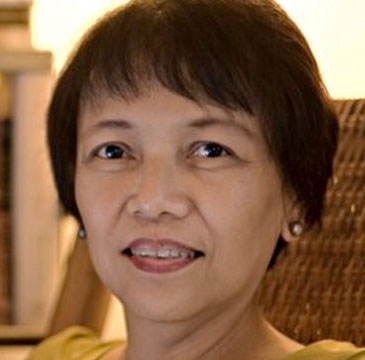SUMMARY
This is AI generated summarization, which may have errors. For context, always refer to the full article.
 Something has been left unsaid in the aftermath of the appointment of the new chief justice, Maria Lourdes Sereno. It’s the big elephant in the room: why did President Aquino bypass Antonio Carpio, the most senior justice?
Something has been left unsaid in the aftermath of the appointment of the new chief justice, Maria Lourdes Sereno. It’s the big elephant in the room: why did President Aquino bypass Antonio Carpio, the most senior justice?
Not only has he logged in the most number of years (12) in the Supreme Court; he also has a good track record of implementing reforms in the judiciary, starting from his entry in 2001. These include the e-library, which is the one-stop shop for digitized Supreme Court decisions starting from 1901, and a template for decongesting the Court’s super-clogged dockets. After about 5 years of pushing for it, the Court adopted it.
Today, among the justices, Carpio is the most current with his cases, meaning, he has the lowest backlog.
As acting chief justice for almost 3 months, the Court was at its most transparent in 111 years. Budget reports, collections of legal fees—previously hidden from the public—were uploaded on the Court’s website. On day 1 after Corona’s conviction, he called for a special en banc and pushed for the release of the justices’ SALNs.
More reforms followed: he allocated billions of pesos, previously deposited in an account which the chief justice was the only one privy to (apart from senior finance officials in the Court), for the construction of much needed courts in Manila and halls
of justices of the Court of Appeals in Cagayan de Oro and Cebu; and he started decentralizing the Court. The judiciary, it appears, is the most centralized government office in the country.
When it comes to decisions, Carpio’s are often thoughtful and well argued. Some describe him to be a “purist” when interpreting the Constitution, as opposed to those who see the meaning of its provisions “evolving with the times.” The latter belong to the “living Constitution” school of thought, a subject of lively debate in the US.
President Aquino told us in an interview that he agreed with most of Carpio’s decisions.
The source of comfort here is: disagreements with Carpio’s opinions are based on philosophical outlook and reading of the Constitution, not on loyalty to the appointing power or to affinity with vested interests.
Many of the Court’s justices, perhaps grudgingly for a few, acknowledge him to be the most prepared to lead the judiciary. When Renato Corona was chief justice, Carpio was marginalized but he continued to be active during en banc discussions. A justice said that he drove intellectual discussions during that time.
It’s up to the President
Of course, it’s the President’s prerogative to choose who gets to be chief justice. No one can argue with that.
It’s also the President’s choice to discard a century-old tradition and pluck one of the most junior justices to lead the Court.
But when the President makes a decision that is not solely based on merit, it is valid to ask what other factors influenced him.
This decision gives us an insight into the President’s mindset: there has to be an element of “like” when he chooses people to appoint.
The Firm
The President’s advisers say that, from the start, Aquino really didn’t like Carpio. He carries the baggage of The Firm, they say, referring to the law office he founded. This law firm supported two presidents, Fidel Ramos and Gloria Macapagal-Arroyo, and eventually had a falling out with the latter. The Firm became synonymous with political power at the time.
Congressman Niel Tupas asked this persistent question about Carpio’s ties to The Firm during the public interview. Ever since Carpio joined the Court, he inhibited himself from cases handled by his former law office, he answered, and he has never lobbied with any justice on behalf of The Firm.
In fact, a justice told me that he usually gives this advice to those who are new in the Court: “Never ask a favor (regarding cases) from colleagues.” This, he said, would lead to trading of votes. I’ll vote with you in this case, you vote with me in my ponencia.
During the controversy over the Vizconde case, when Lauro Vizconde alleged that Carpio was lobbying on behalf of Hubert Webb (information that came from then Chief Justice Corona), the Court, en banc, issued a resolution saying that Carpio had not approached anyone of them. This was the period when Carpio belonged to the minority in the Arroyo cases.
Brush with the Cojuangcos
Some businessmen, I gathered, cautioned the President about appointing Carpio.
History may have likely shaped the President’s dislike of Carpio.
During Ramos’s term, when Carpio was counsel for the President, he was the legal architect of the deregulation of the telecoms industry, then monopolized by PLDT, majority shares of which were owned by Antonio Cojuangco. Ramos’s vision was to level the playing field; his national security adviser, Jose Almonte, provided the strategic direction. He and Carpio were key in making this vision a reality.
Carpio was also tasked to coordinate with the Presidential Commission on Good Government to insure that Eduardo Cojuangco Jr, a Marcos crony, did not gain control of San Miguel Corp and the United Coconut Planters Bank. Cojuangco’s shares were contested by the coconut farmers.
Malacañang largely succeeded in this move. After Carpio left the Office of the President in 1995, he filed, together with coconut farmers, a petition in the Supreme Court to declare the coconut levy funds public. The farmers won this. The Court decided the funds “are not only affected with public interest; they are, in fact, prima facie public funds.” – Rappler.com
Add a comment
How does this make you feel?
There are no comments yet. Add your comment to start the conversation.